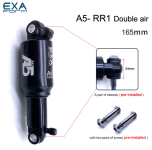casainho
10 GW
- Joined
- Feb 14, 2011
- Messages
- 6,045
Can you please explain why coasting is important?Yes, just like one pedal driving. The downside is that you cannot coast.
Can you please explain why coasting is important?Yes, just like one pedal driving. The downside is that you cannot coast.
I think it’s just personal preference. Some people might prefer coasting.Can you please explain why coasting is important?
The original motor do coast every time I decelerates, and then I feel out of control - to have control again, I need to keep increasing the speed or to brake. The original brakes are not progressive, it is like more an on/off brakes, the the riding experience is not good.I think it’s just personal preference. Some people might prefer coasting.
I’m talking in general. You have a small bike that’s not stable at high speeds. Some people with bigger and heavier bikes might prefer coasting. Personally, I prefer the way you did it although I never tried it.The original motor do coast every time I decelerates, and then I feel out of control - to have control again, I need to keep increasing the speed or to brake. The original brakes are not progressive, it is like more an on/off brakes, the the riding experience is not good.
I really like to have no coasting. And If I want to relax my throttle hand, like when I am riding and long flat roads, I can enable the cruise control.
Also this way, almost do not use the brakes, as they are bicycle brakes, not motorcycle brakes, and my Food Q1S velocity and weight is more near a motorcycle. This way I save the brake, otherwise they would be gone fast and I would need to spend more money.
I only see advantages.
I don't know about bigger bikes. Although I have a friend working on electric motorcycle since many years ago. We were discussing the usual buttons they have, and seems this Chinese buttons I bought, are kind of standard.I’m talking in general. You have a small bike that’s not stable at high speeds. Some people with bigger and heavier bikes might prefer coasting. Personally, I prefer the way you did it although I never tried it.
I guess that is the biggest disadvantage. You have to precisely control the throttle all the time. I guess that could be fatiguing on long rides, you tell me. Also, if you want to use the pas only, it would be annoying because you would have to continue pedaling all the time. Although I’m not sure your setup works with pas or throttle only.I don't know about bigger bikes. Although I have a friend working on electric motorcycle since many years ago. We were discussing the usual buttons they have, and seems this Chinese buttons I bought, are kind of standard.
He told me that some old motorcycles had a left throttle only to brake regen.
Or others that have a kind o half throttle, where to one direction they accelerate and to other they brake. But he also prefers this simple throttle + a button to choose a more or less powerful mode.
And buttons should be on left side, as the hand of throttle should not be moving to click on buttons, otherwise can be dangerous to make an erroneous movement of the throttle.
There is no need to have precisely control the throttle, like let's say when you hit a bump and your hand on throttle will change a bit. The VESC PID speed controller parameters, need to be changed in a way there is a more fast or less fast response to throttle changes. In my case, I found some values that are ok to me.I guess that is the biggest disadvantage. You have to precisely control the throttle all the time. I guess that could be fatiguing on long rides, you tell me.

Also, if you want to use the pas only, it would be annoying because you would have to continue pedaling all the time. Although I’m not sure your setup works with pas or throttle only.
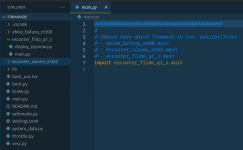
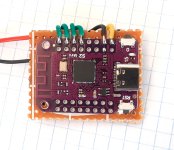
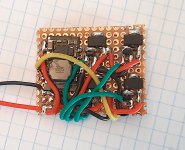
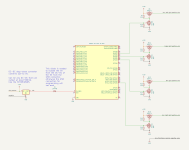
On the other day, by mistake I disabled charging on the BMS. Then, the scooter would not brake/regen at all and I didn't know whyI’m talking in general. You have a small bike that’s not stable at high speeds. Some people with bigger and heavier bikes might prefer coasting. Personally, I prefer the way you did it although I never tried it.
When I was using slide regen, which is what you're describing, I had a pushbutton with a simple resistor/pot circuit that applied around 50W of throttle when pressed, which let the bike "coast" indefinitely, and was also great when navigating in between foot traffic or if my throttle hand got tired. I also used cruise for longer stretches.On the other day, by mistake I disabled charging on the BMS. Then, the scooter would not brake/regen at all and I didn't know why
I could feel the coast, and yes, it is interesting but only up to when I need to reduce the speed or brake - I really feel without control if coasting, and I really prefer not coasting and having brake regen.
So, if I want to have coast enable, is just a matter to connect to VESC with my phone and configure the regen current to be zero.
It is on my TODO list the features that I want to implement, using the buttons and the display:
Maybe I can add a feature to enable/disable coast, that will just set regen current to zero.
- Increase/decrease max speed limit: so if my wife or my 13 years old son want to ride, it can be safer like having max speed of 25kms/h or any other value.
- Increase/decrease assist levels (5 levels): each mode having different motor current for the acceleration, regen current for braking, as also different motor power. Currently I am using 135A motor phase current, 2000W max motor power, 75A regen current and 1500W max regen current. My wife is smaller and almost half of my weight, so, don't need such high motor currents and power.
- Start cruise control: to relax on long straight rides.
That is a very good idea. However, I will only focus on developing what I use and my TODO list is the same as previous. I am also building the front lights board, then finally I will try to install most of possible the electronics on the seat tube. And then build the final battery as small as possible, as I want to have much space as needed to carry small things like when I go shopping. Finally, 3D print the final display.When I was using slide regen, which is what you're describing, I had a pushbutton with a simple resistor/pot circuit that applied around 50W of throttle when pressed, which let the bike "coast" indefinitely, and was also great when navigating in between foot traffic or if my throttle hand got tired. I also used cruise for longer stretches.
I know nothing about this stuff but have a look here.I was getting some motor noise and vibrations at high currents / high load, sometimes even motor quick shutdowns (probably VESC protection), when I pulled the full throttle.
That is great!! thanks.I know nothing about this stuff but have a look here.
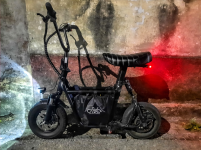
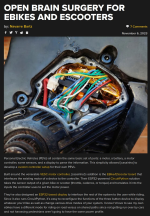
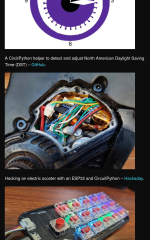
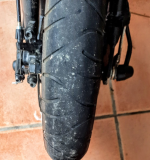
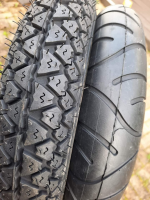
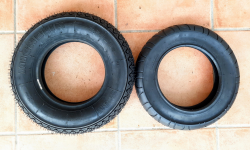
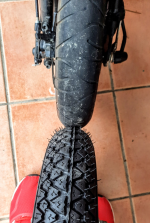

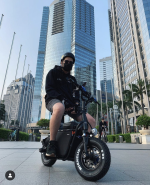
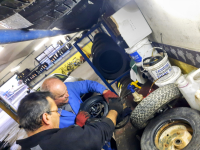

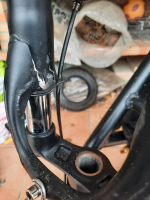
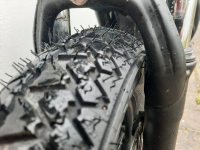
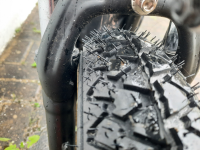
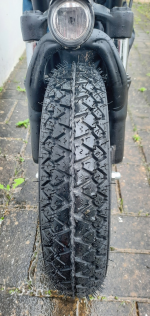

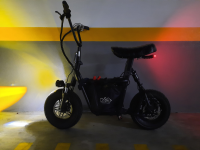

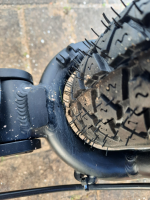

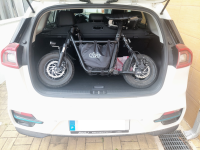
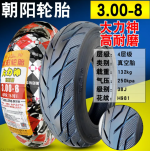

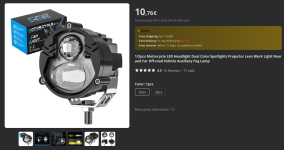

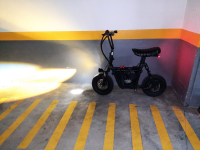
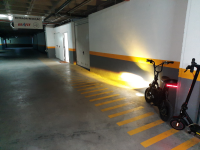
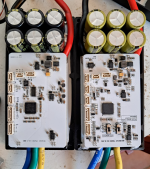
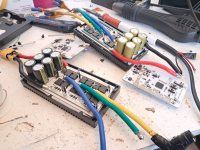
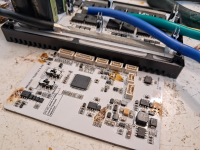

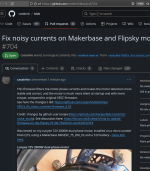
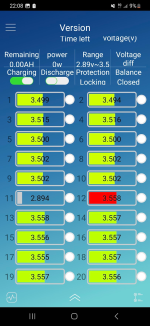

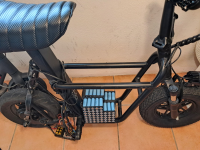
Front suspension is the original. The rear shock I changed to this one:Hi, great project! How do you like the comfort on light offroad, in the forest or on gravel paths with these new tyres? Did you upgrade the suspension?
